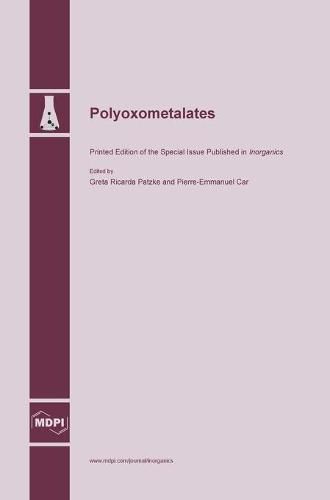Readings Newsletter
Become a Readings Member to make your shopping experience even easier.
Sign in or sign up for free!
You’re not far away from qualifying for FREE standard shipping within Australia
You’ve qualified for FREE standard shipping within Australia
The cart is loading…






This title is printed to order. This book may have been self-published. If so, we cannot guarantee the quality of the content. In the main most books will have gone through the editing process however some may not. We therefore suggest that you be aware of this before ordering this book. If in doubt check either the author or publisher’s details as we are unable to accept any returns unless they are faulty. Please contact us if you have any questions.
Polyoxometalates (POMs), known since the mid-18th century, have fascinated generations of researchers and continue to attract promising young scientists to date. Ever since the first pioneering investigations into the manifold structures and properties of POMs, polyoxometalate chemistry emerged as an independent and highly productive area of research, with constant and exciting new developments from an exceptionally wide range of scientific disciplines, such as synthetic/structural chemistry, biology, physics and theoretical chemistry. Indeed, polyoxometalates as highly versatile transition metal oxo-cluster materials offer virtually endless options for future applied devices. They excel through their: wide compositional and structural diversity, giving rise to flexible tuning of electronic properties, versatile redox properties, chemical stability and robustness. Among this growing family of oxo-clusters, two POM classes, namely transition metal substituted polyoxometalates (TMSPs) and lanthanide substituted polyoxometalates (LnSPs), are currently attracting special interest due to their promising role in current competitive research areas, e.g., water splitting, catalysis, magnetism, electronic materials and bio-medical applications. This Special Issue focuses on the most recent advances in polyoxometalate chemistry covering synthetic methods, mechanistic insights and application perspectives in photocatalysis (water splitting), organic catalysis, magnetism, bio-medicine, electrochemistry and other currently relevant areas.
$9.00 standard shipping within Australia
FREE standard shipping within Australia for orders over $100.00
Express & International shipping calculated at checkout
This title is printed to order. This book may have been self-published. If so, we cannot guarantee the quality of the content. In the main most books will have gone through the editing process however some may not. We therefore suggest that you be aware of this before ordering this book. If in doubt check either the author or publisher’s details as we are unable to accept any returns unless they are faulty. Please contact us if you have any questions.
Polyoxometalates (POMs), known since the mid-18th century, have fascinated generations of researchers and continue to attract promising young scientists to date. Ever since the first pioneering investigations into the manifold structures and properties of POMs, polyoxometalate chemistry emerged as an independent and highly productive area of research, with constant and exciting new developments from an exceptionally wide range of scientific disciplines, such as synthetic/structural chemistry, biology, physics and theoretical chemistry. Indeed, polyoxometalates as highly versatile transition metal oxo-cluster materials offer virtually endless options for future applied devices. They excel through their: wide compositional and structural diversity, giving rise to flexible tuning of electronic properties, versatile redox properties, chemical stability and robustness. Among this growing family of oxo-clusters, two POM classes, namely transition metal substituted polyoxometalates (TMSPs) and lanthanide substituted polyoxometalates (LnSPs), are currently attracting special interest due to their promising role in current competitive research areas, e.g., water splitting, catalysis, magnetism, electronic materials and bio-medical applications. This Special Issue focuses on the most recent advances in polyoxometalate chemistry covering synthetic methods, mechanistic insights and application perspectives in photocatalysis (water splitting), organic catalysis, magnetism, bio-medicine, electrochemistry and other currently relevant areas.